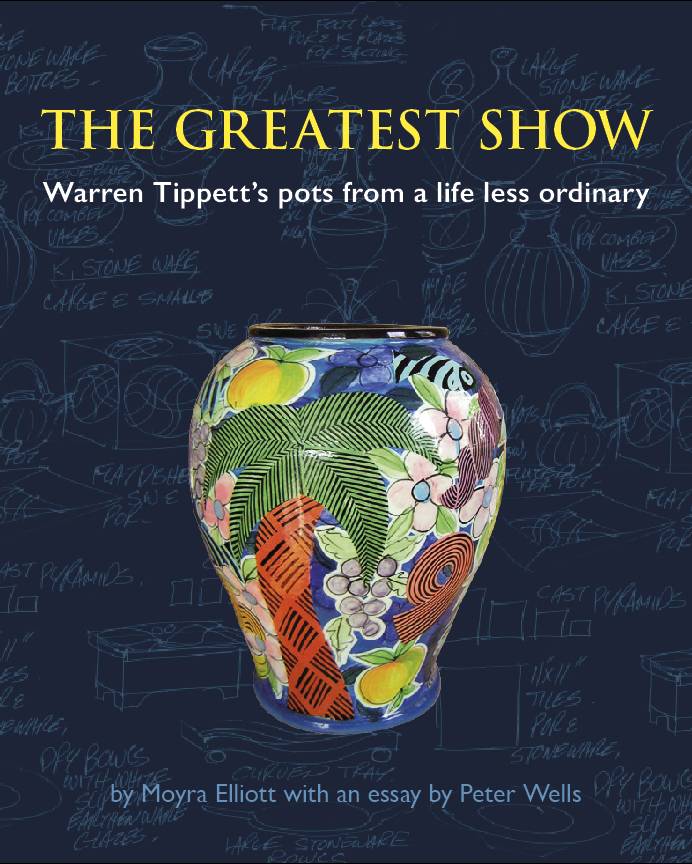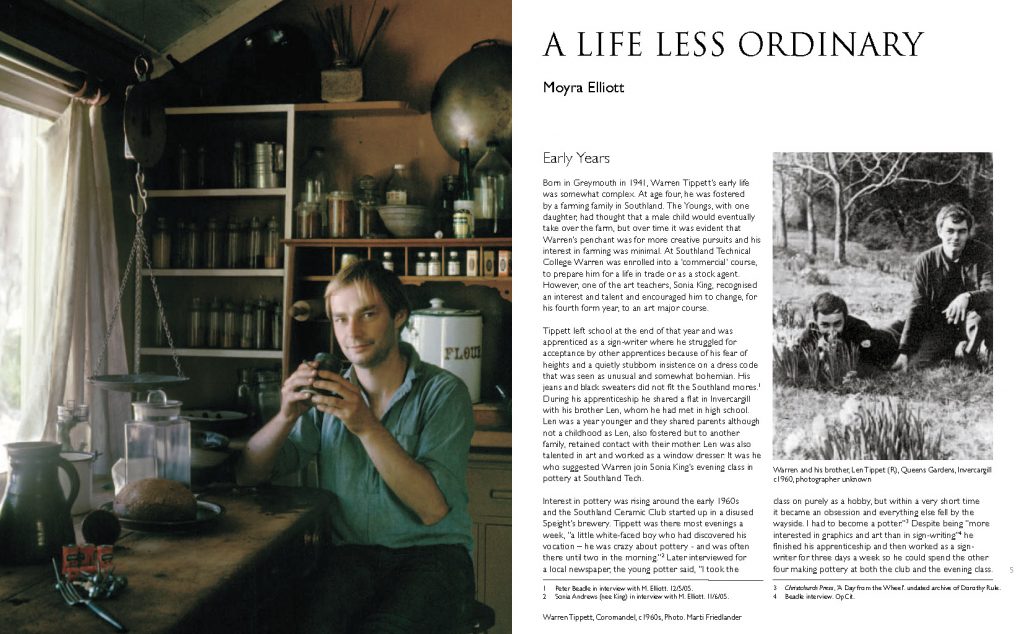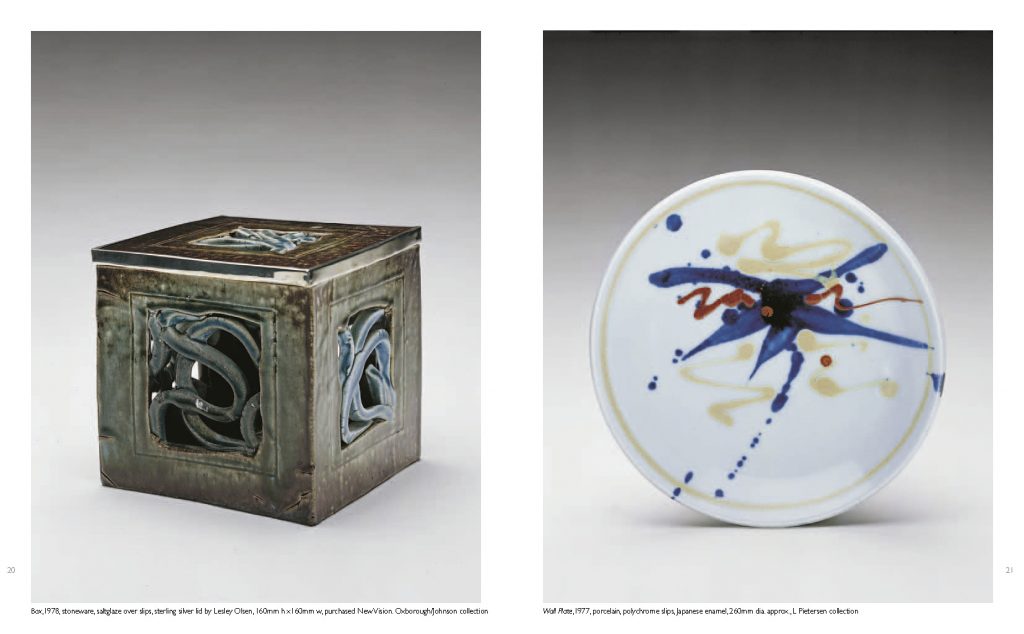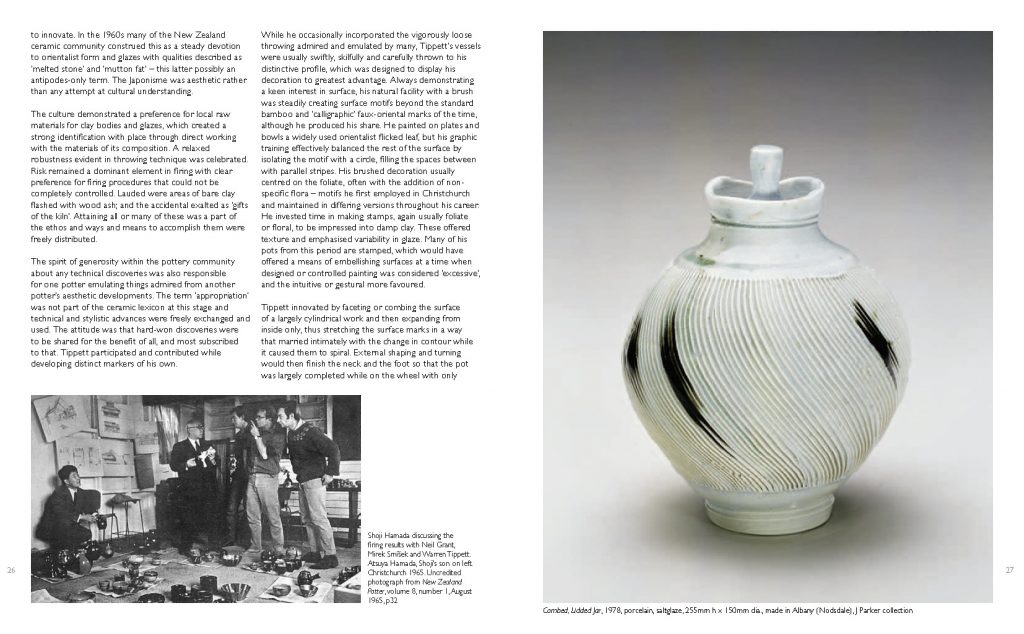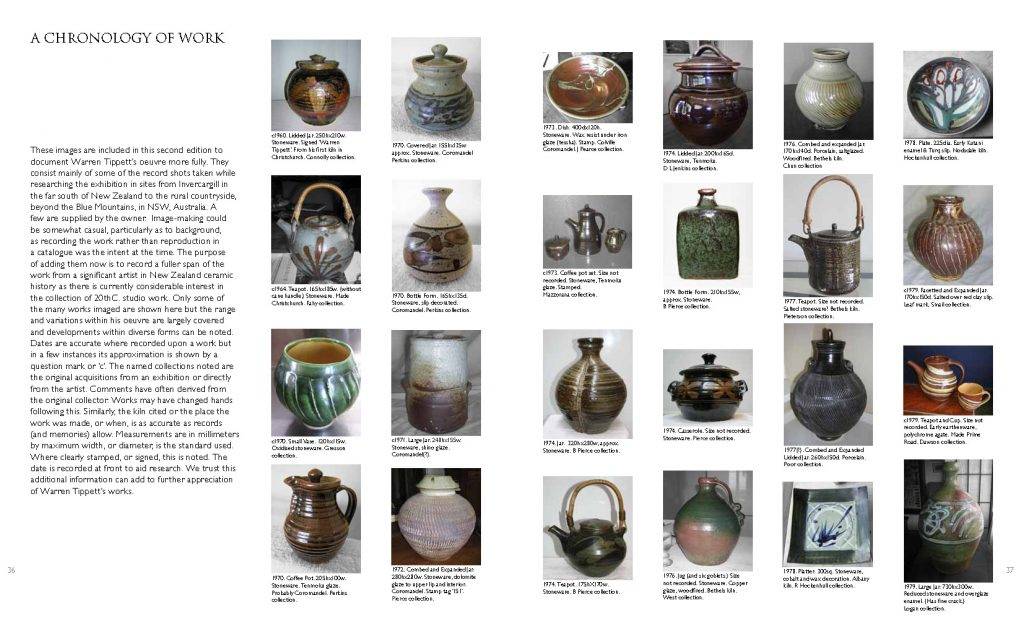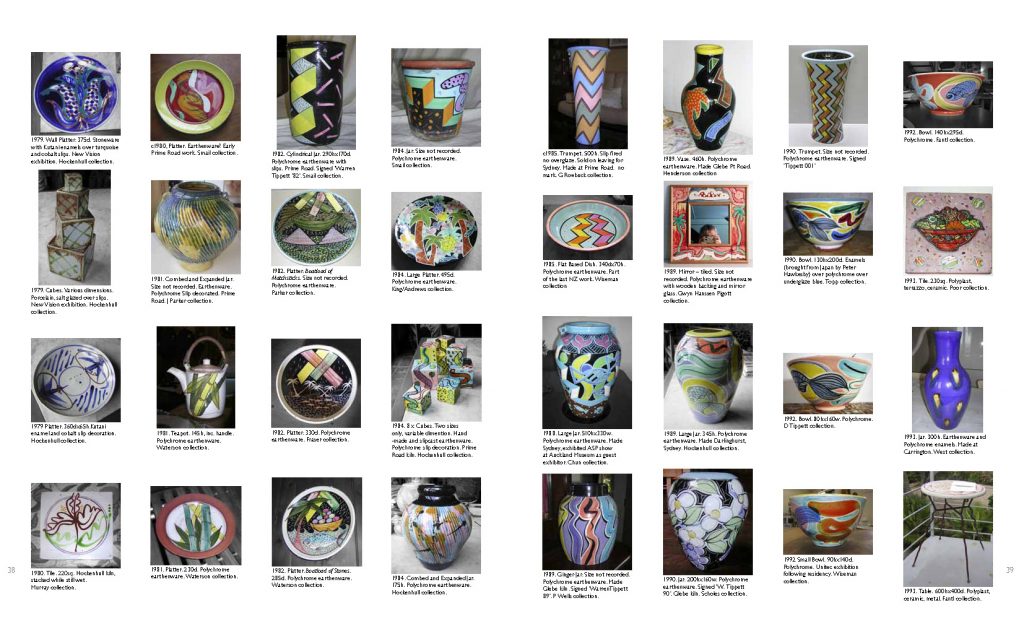The Greatest Show: Warren Tippett’s pots from a life less ordinary
Moyra Elliott and an essay by Peter Wells. With photographs by Marti Friedlander and Studio La Gonda
Revised and expanded second edition.
Biography and works of potter – Warren Tippett (b.1941–d.1994).
Researched and written by Moyra Elliott – co-author of Cone Ten Down: Studio Pottery in New Zealand 1945-1980, (Bateman 2009). Warren Tippett was an agent of change in New Zealand ceramic practice. He was reared as a ‘mud and water man’ in the 1960s because of where the strengths lay in the clay culture of the time with its influences from an imported Anglo-oriental style. However, he jumped ship and some twenty years after he became a potter, after playing briefly and creatively with sculpture – returned to the vessel and made the surface decoration his primary concern. He investigated areas that hitherto had been of little interest in New Zealand pottery and in doing so, connected with long histories of decorated pottery from many cultures. He also took references from his surroundings in Grey Lynn introducing palm trees, cacti and floral motifs and responded to the fresh stimulation of his urban environment with its strong Polynesian elements – lei and lava-lava and the Tongan brass band along with the vibrant street life where the raffish and the gaudy juxtaposed the cool. His new vocabulary became something unique – an expression of a region, a poly-centrist, polygenetic place located somewhere on the western Pacific part of the map.
Through his work, Tippett helped reform the canon of ceramics in New Zealand. No artist works in isolation but he was critical for the acceptance of earthenware in contemporary ceramic practice. His legacy is that he legitimised electric firing at lower temperatures which overturned an entrenched blueprint on how to make and what to make. By embracing the aesthetics more associated with pop culture, Polynesia and carnival ware, he opened doors to a healthier diversity.
The first edition of this book accompanied a retrospective exhibition of Warran Tippett’s work at Objectspace in Auckland 2005/6 curated by the author. This 2nd expanded edition features a visual chronology of Warren Tippett’s works, as well as previously unpublished portraits of Tippett by the late Marti Friedlander, and revised photographs with better reproductions of key works.
2021
ISBN 978-0-9951184-7-8
Limited to 100 copies
RRP $40, 44pp 210x260mm portrait with cover, saddle stitched.
For all wholesale orders and requests info@rimbooks.com
“Warren Tippett is a seminal figure in the history of New Zealand studio ceramics because his works and lifestyle connect up key moments and significant local and international studio ceramics dynamics. In the words of curator Moyra Elliott, “Tippett helped reform the canon of ceramics in New Zealand.” Tippet started potting in Invercargill in the late 1950s. By the 1970s, and living in Coromandel, he was recognized as an important second generation figure in the ranks of potters working within the Anglo-Oriental tradition. This school of thought derives from the writings of English potter Bernard Leach which drew inspiration from medieval English and traditional Japanese and Korean pots which emphasised material, a quiet decoration and the spontaneity of the firing process. The philosophy engendered a vocational, workshop centred, pottery making life. It was this approach that informed most New Zealand studio ceramics production of the time. Moyra Elliott has pinpointed the time around the 1978 exhibition at Auckland’s New Vision Gallery and the 1980 Five by Five show at the Denis Cohn Gallery as a pivotal time in Tippett’s practice which “condense shifts in New Zealand clay practice, which actually took more than a decade, into a little over a year. The shift revolves around notions of function and diversity…there was a repositioning beyond function and into the decorative.” Changes in Tippett’s lifestyle were reflected in his work. As his interest moved from form to surface his work embraced the colourful and vibrant influences of his own Auckland and Sydney environments, the traditions of decorated Oriental and Mediterranean ceramics and contemporary international developments that located ceramics as part of a wider dynamic visual culture. In making a series of innovations within his own practice he “overturned an entrenched blueprint on how to make pots and what kind of pots to make. By embracing the formerly scorned earthenware and aesthetics more associated with pop culture, Polynesia and carnival-ware he opened the doors to a healthier diversity””.
Biography of Warren Tippett – Sarjeant Art Gallery

